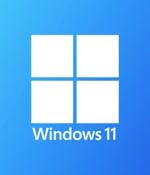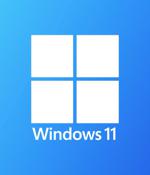Security News

A security researcher has disclosed technical details for a Windows zero-day privilege elevation vulnerability and a public proof-of-concept exploit that gives SYSTEM privileges under certain conditions. A public proof-of-concept exploit and technical details for an unpatched Windows zero-day privilege elevation vulnerability has been disclosed that allows users to gain SYSTEM privileges under certain conditions.

Microsoft is now rolling out the Windows 11 upgrade to more eligible Windows devices as part of a phased rollout designed to deliver a smooth upgrade experience. "The availability of Windows 11 has been increased and we are leveraging our latest generation machine learning model to offer the upgrade to an expanded set of eligible devices," Microsoft said in an update to the Windows health dashboard.

Microsoft has released the optional KB5006738 Preview cumulative update for Windows 10 2004, Windows 10 20H2, and Windows 10 21H1. Microsoft says this update and a separate Windows Server preview update will fix all outstanding printing issues affecting users since they mitigated the PrintNightmare vulnerabilities. The KB5006738 cumulative update is part of Microsoft's September 2021 monthly "C" update, allowing Windows users to test upcoming fixes before they are released as part of the upcoming November 2021 Patch Tuesday.

Microsoft has begun force installing the PC Health Check application on Windows 10 devices using a new KB5005463 update. PC Health Check is a new diagnostics tool created by Microsoft and released in conjunction with Windows 11 that provides various troubleshooting and maintenance features.

Today is the 20th anniversary of Windows XP, and although the operating system reached the end of support in 2014, way too many people continue to use the insecure version of Windows. Why are people still stuck on XP? While Vista felt like an experimental release for a beta version, Windows 7 was an excellent and refined release, and so was Windows 10.

Three JavaScript libraries uploaded to the official NPM package repository have been unmasked as crypto-mining malware, once again demonstrating how open-source software package repositories are becoming a lucrative target for executing an array of attacks on Windows, macOS, and Linux systems. The malicious packages in question - named okhsa, klow, and klown - were published by the same developer and falsely claimed to be JavaScript-based user-agent string parsers designed to extract hardware specifics from the "User-Agent" HTTP header.

Microsoft has fixed multiple known issues impacting printing on Windows 11 with the release of the optional KB5006746 cumulative update preview on Thursday. Windows 11 users can also manually download and deploy the cumulative update preview from the Microsoft Update Catalog.

Microsoft has released the optional KB5006746 cumulative update preview for Windows 11, fixing sixty-four issues, including AMD CPU performance and gaming issues. This cumulative update preview is part of Microsoft's scheduled October 2021 monthly "C" updates, allowing Windows 11 users to test the upcoming fixes being released on September 9th as part of Patch Tuesday.

Microsoft is preparing Windows 10 21H2, the next Windows 10 version, for a November 2021 release and is now rolling it out to all Windows Insiders in the Release Preview Channel. The Windows 10 21H2 feature update is offered as an optional update through the "Seeker" experience in Windows Update to Insiders who go to Settings > Update & Security > Windows Update.

Microsoft has released the first preview version of the Windows Subsystem for Android for Windows 11 Insiders, and one of the more interesting features is that you can sideload Android apps. The Windows Subsystem for Android is a new feature of Windows 11 that allows you to run native Android apps directly from the desktop in a virtualized environment.